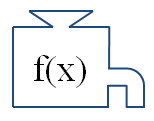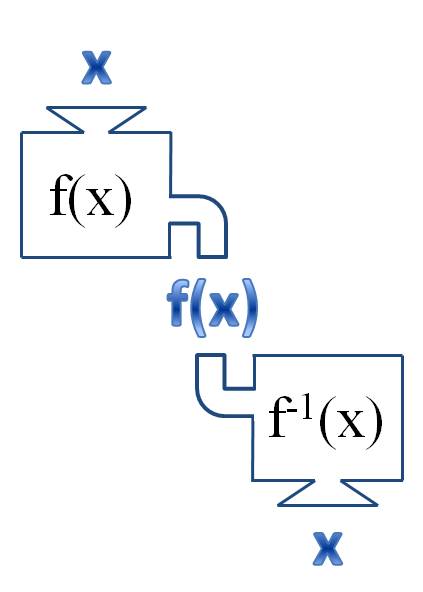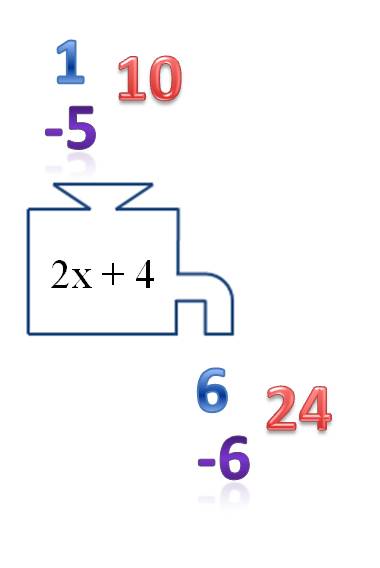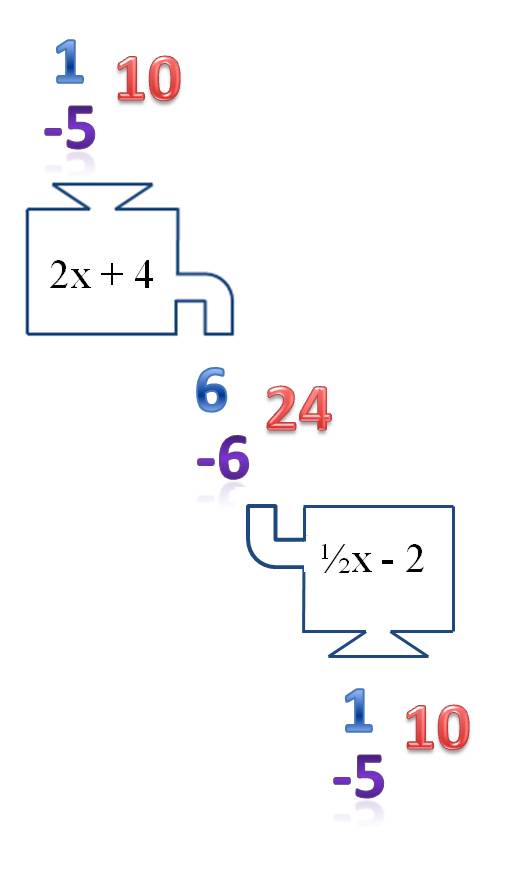The inverse of a function undoes whatever the original function did. If you plug a number into a function and then plug the result of this into the inverse, you always get back what you started with.
Think of a function as a machine that operates on a number. You put in a value for x, the machine performs the rule defined by f(x), and the machine then spits out the new value.
The inverse function, written f -1(x), is the function that reverses all the operations and gives you the original number back. You can think of it as turning the function machine upside down and running the number through it backwards:
As an example, let’s say that f(x) = 2x + 4. If you put in 1, the machine gives out 6; if you put in 10, the machine gives out 24; if you put in -5, the machine gives -6.
The inverse function for 2x + 4 is ½x – 2. If you put 6, 24, and -6 into this function, you get back the numbers you started with!
You can always show that two functions are inverses of each other by showing that
f(f ‑1(x)) = x or f ‑1(f(x)) = x. Using the example above:
f(f -1(x)) = 2(½x – 2) + 4 = x – 4 + 4 = x.




